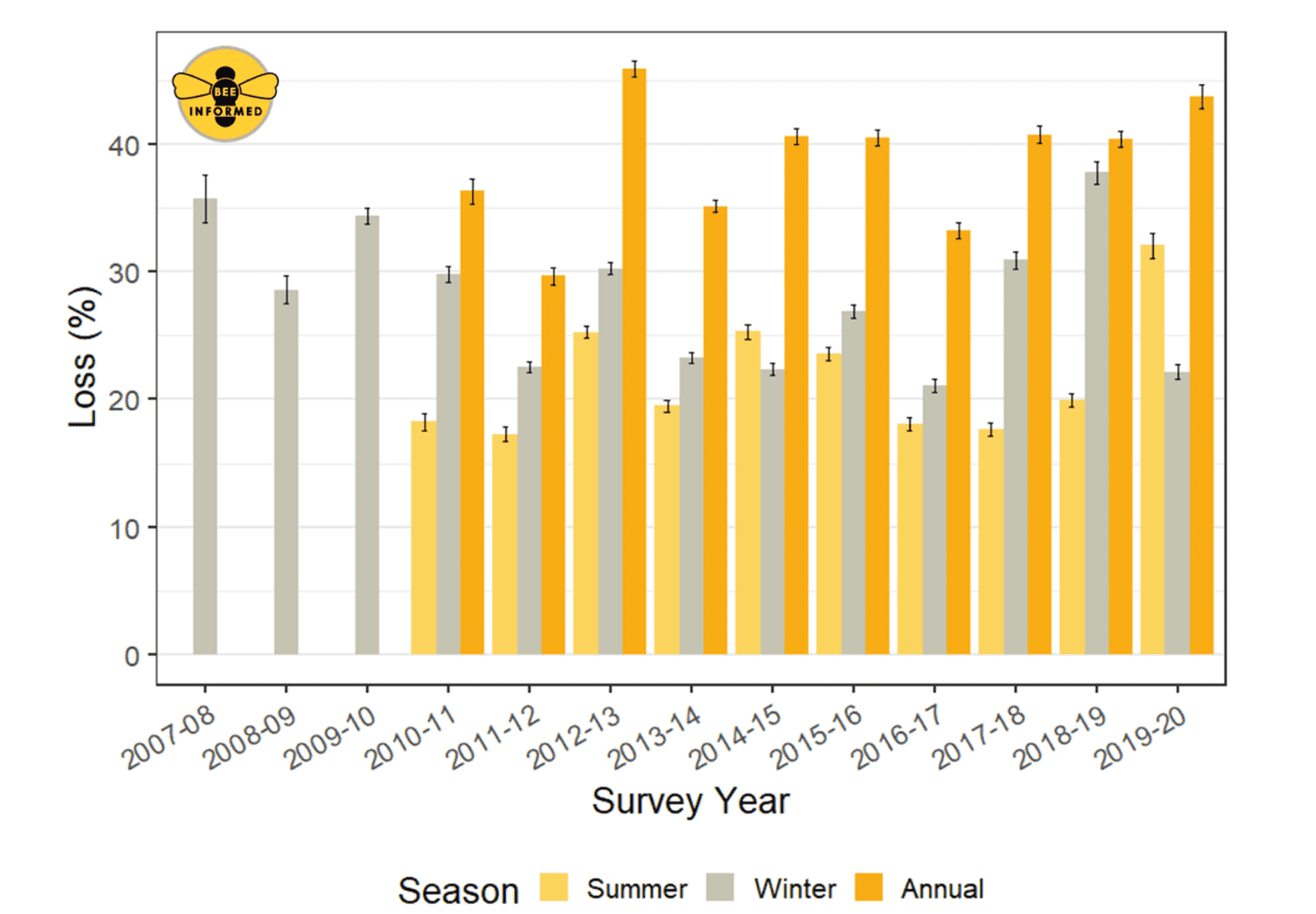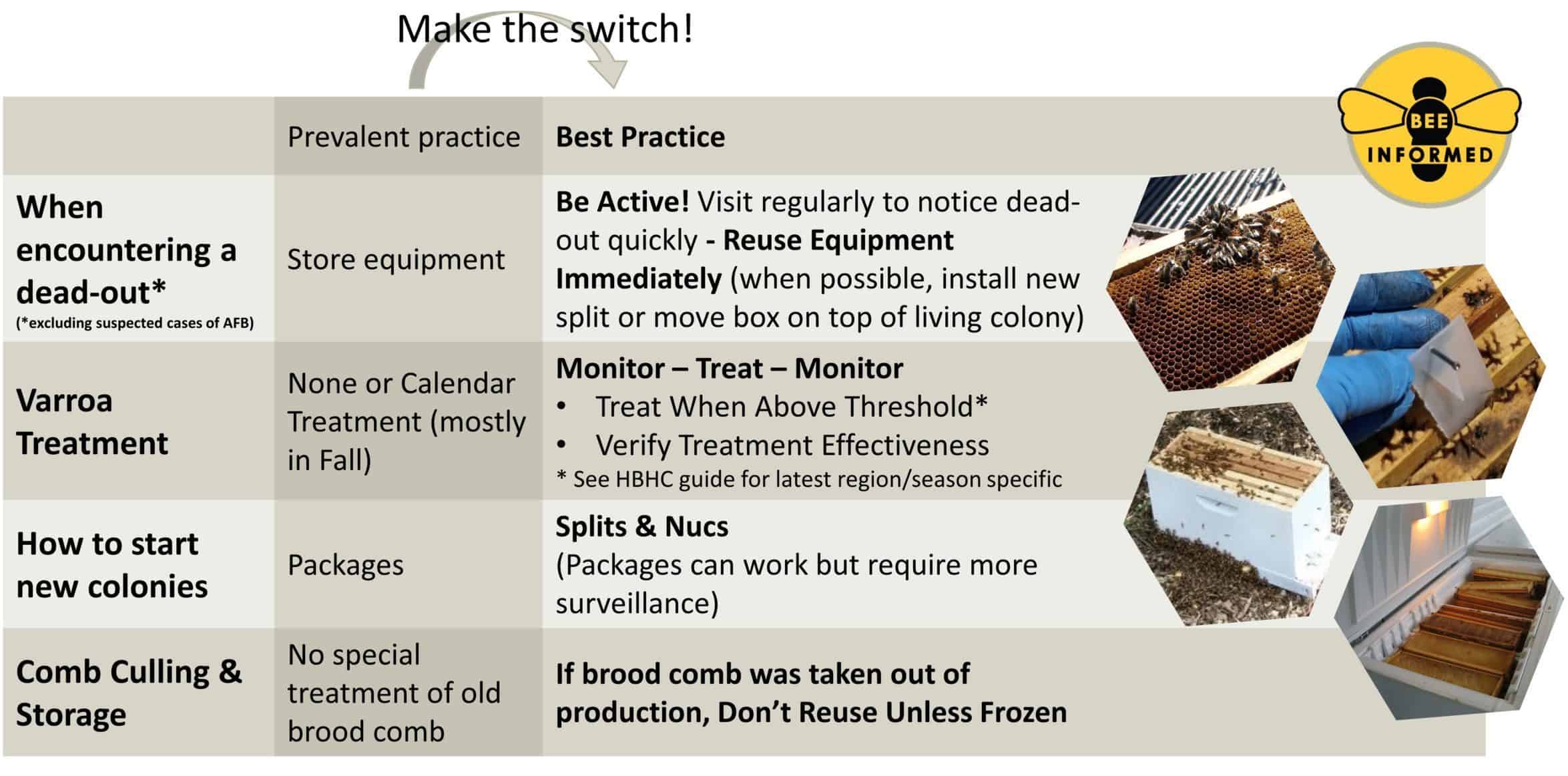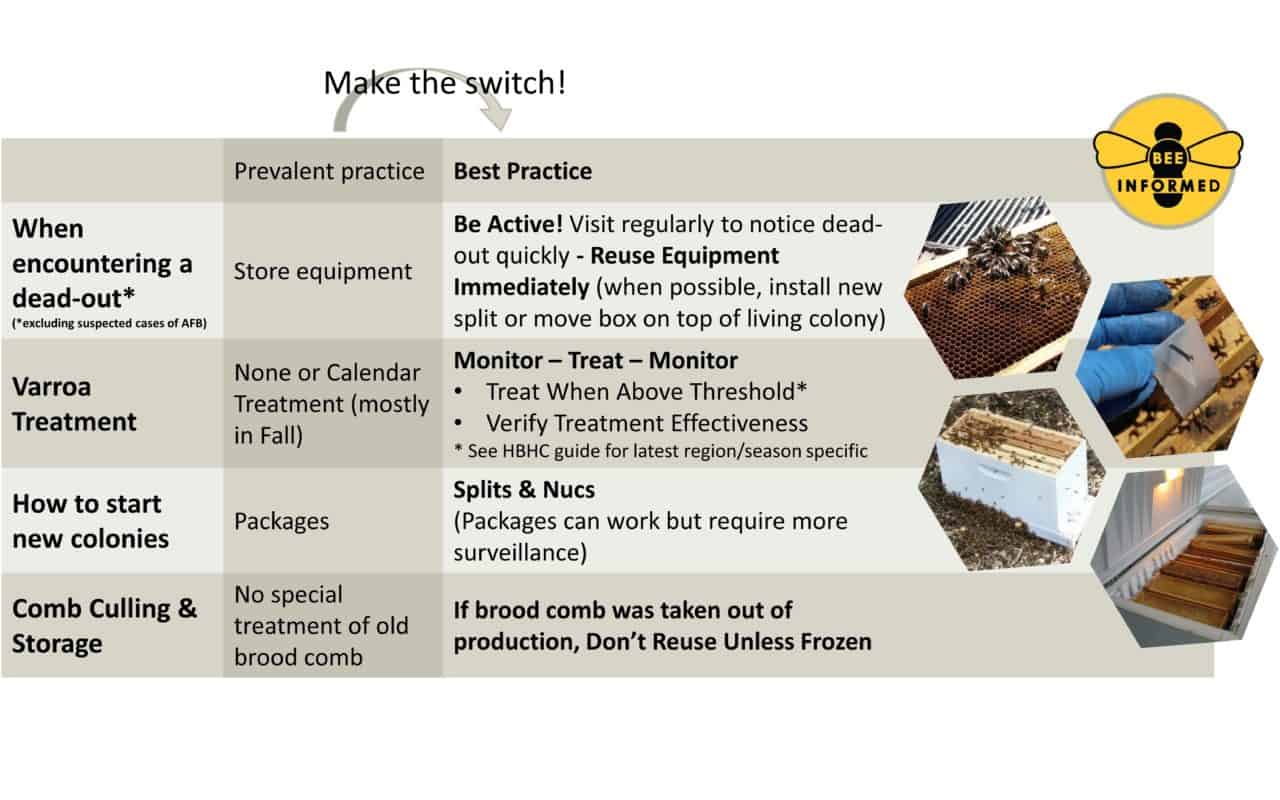Every spring, The Bee Informed Partnership (BIP) administers the Annual Colony Loss and Management Survey to beekeepers across the country. The survey was begun in 2006 to keep close track of US honey bee colony mortality rates after many of the country’s beekeepers began reporting alarmingly high overwinter colony losses. The survey was amended a few years later to include questions about beekeeper management practices, in order to record trends in management strategies and evaluate the link between those practices and risk of colony mortality. As part of her Ph.D. thesis at University of Maryland’s Bee Research Lab, BIP’s Science Coordinator, Dr. Nathalie Steinhauer, in collaboration with Dr. Dennis vanEngelsdorp and Dr. Claude Saegerman, undertook a project to do just that.
The group used the 18,791 loss and management survey responses collected between 2012-2015 to conduct a study measuring the relative impact of different management practices on colony health outcomes, the results of which have recently been published in The Science of the Total Environment (vol. 753).

The Loss and Management Survey beekeeper respondents were asked to report on 82 unique management practices encompassing the wide range of activities associated with beekeeping, from feeding, to the type of equipment used, queen management, and Varroa monitoring and control. Recruiting the assistance of 14 honey bee health and epidemiology experts, each management practice was assigned a score, which allowed the researchers to calculate a total score for each beekeeper defining how close their responses were to the expert’s opinions of “best practices”. In short, the higher the score, the closer the beekeeper was following the practices that the experts thought were best.
Were the experts correct? – Now equipped with an index that quantified management practice “quality” (at least according to the experts), Dr. Steinhauer et al. then wanted to test if this index correlated with higher colony survival. Were the beekeepers that experts identified as “best” also those with lowest losses? Indeed, beekeepers reporting combined management practices that more closely mirrored expert recommendations experienced lower colony loss rates than the yearly average loss rate.
The next step question was then to tease apart the relative contributions of each of the 82 management practices evaluated toward the overall management index? The researchers continued their work to determine which set of management practices had the greatest association with colony loss. In addition, they performed this work separately by operation type, grouping “small scale” operations (<50 colonies) from the north half of the country vs. the south half, and grouping “large scale” operations (>50 colonies) according to whether they operated in a single state (likely stationary) or multiple states (likely migratory).
What management matters most? – Before discussing our results, it is important to remember that correlation does not equal causation. The associations we found may be due to hidden differences between groups.
Overall, there were three management categories where changes to these behaviors have the greatest association with colony survival rate across all operation types: 1) comb management; 2) Varroa management (which was captured in multiple management criteria); 3) source of new colonies. Replacement of old comb and implementation of a Varroa management plan was associated with increased colony survival rates, while the practice of starting new colonies from packages was correlated with lower survival rates in comparison with colonies created by splitting existing colonies. This is particularly relevant for small-scale beekeepers, who are far more likely than large-scale operations to use establish colonies using packages and to install them on bare foundation, which requires a significant investment in time and resources in order for the bees to draw new comb. We find an association between reusing deadout equipment (after taking appropriate sanitation measures and NOT if AFB infection is suspected) and lower operational loss rate. This could be the result of beekeepers who regularly monitor their colonies and react faster to dead colonies.
In terms of Varroa management, both monitoring and control were deemed important, indicating that the use of prophylactic “calendar treatments” should be replaced with a comprehensive Varroa monitoring schedule, where colonies are only treated when Varroa levels are above threshold, and treatment effectiveness is verified with a follow-up check.

Large-scale beekeepers had higher management index scores than small-scale beekeepers because their management practices more closely aligned with expert recommendations. There was also greater variation between large-scale operations in terms of the relative importance of management practice modifications on loss rates compared to small-scale operations. This highlights the importance for large-scale beekeeping operations to work with specialist consultants, such as BIP’s Field Specialists, to develop an individualized management plan tailored to the operation’s unique needs.
Dr. Steinhauer and her colleagues have successfully developed a method for analyzing comprehensive management data and this is the first study to show an association between overall operational management practices and colony mortality risk. We know management practices are not the only factors affecting honey bee colony losses, but unlike the weather, improving management practices is something that beekeepers can control, and this project helps identify where beekeepers can best direct their efforts.
